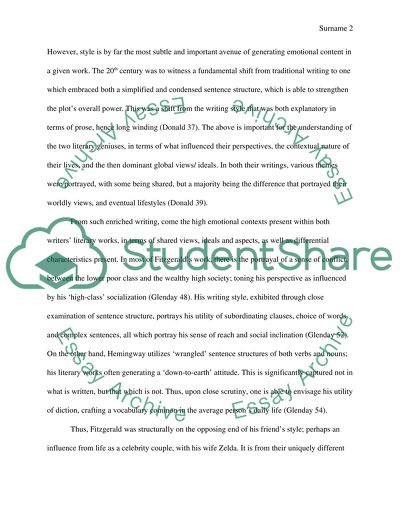Cite this document
(“Fitzgerald and Hemingway Term Paper Example | Topics and Well Written Essays - 2000 words”, n.d.)
Fitzgerald and Hemingway Term Paper Example | Topics and Well Written Essays - 2000 words. Retrieved from https://studentshare.org/literature/1645656-fitzgerald-and-hemingway
Fitzgerald and Hemingway Term Paper Example | Topics and Well Written Essays - 2000 words. Retrieved from https://studentshare.org/literature/1645656-fitzgerald-and-hemingway
(Fitzgerald and Hemingway Term Paper Example | Topics and Well Written Essays - 2000 Words)
Fitzgerald and Hemingway Term Paper Example | Topics and Well Written Essays - 2000 Words. https://studentshare.org/literature/1645656-fitzgerald-and-hemingway.
Fitzgerald and Hemingway Term Paper Example | Topics and Well Written Essays - 2000 Words. https://studentshare.org/literature/1645656-fitzgerald-and-hemingway.
“Fitzgerald and Hemingway Term Paper Example | Topics and Well Written Essays - 2000 Words”, n.d. https://studentshare.org/literature/1645656-fitzgerald-and-hemingway.


